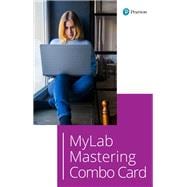For freshman or sophomore, 1-semester/1-2 quarter courses covering applied calculus for students in business, economics, social sciences, or life sciences.
This ISBN is for the 18-week Combo Access pack. Pearson eText is included.
An applied presentation that makes the math meaningful
Calculus with Applications, Brief Version, 12th Edition? prepares students for success in their professional careers with timely applications incorporated throughout. Widely known for using real data in their examples and exercises, the authors make mathematics relevant and accessible throughout the exposition, examples, exercise sets, and supplementary resources. Students have ample opportunity to relate what they’re learning to career situations through the Apply It question at the beginning of sections, the applied examples and exercises, and the Extended Application at the end of each chapter. The 12th Edition introduces coauthor Geoffrey Krader, whose enhancements to the MyLab® Math course make it an even more integrated and rich learning resource.
Personalize learning with MyLab Math with Pearson eText
This flexible digital platform combines unrivaled content, online assessments, and customizable features so you can to personalize learning and improve results, one student at a time.
Pearson eText is an easy-to-use digital textbook available within MyLab that lets you read, highlight, and take notes all in one place.
NOTE: This MyLab® Combo Access pack includes a MyLab Math access code plus a loose-leaf print version (delivered by mail) to complement your MyLab experience.











